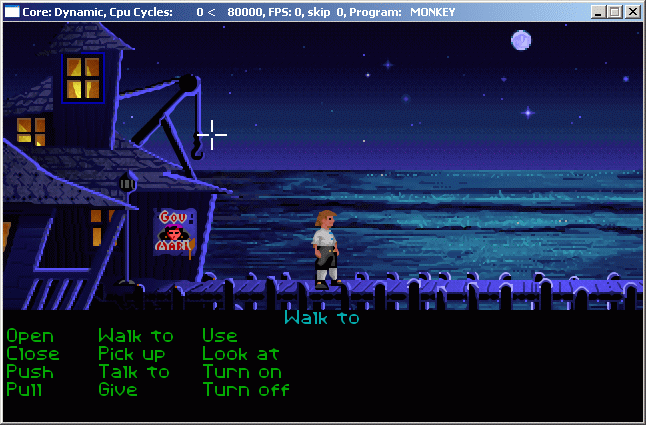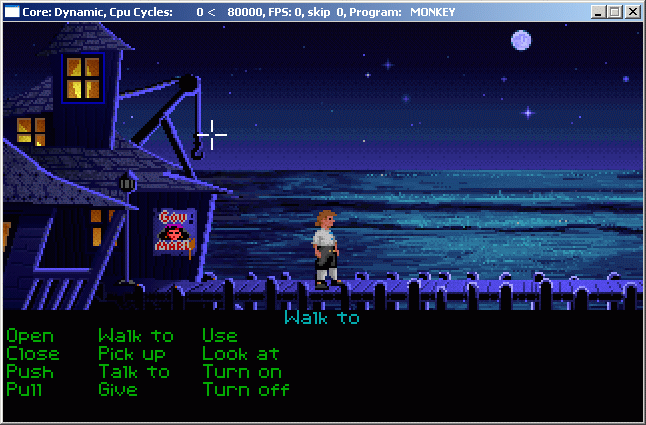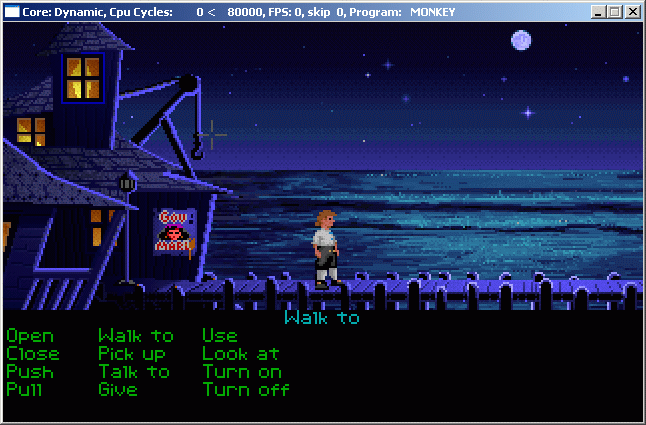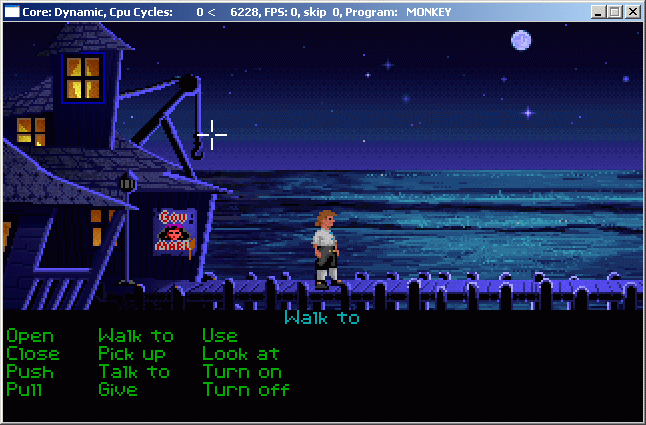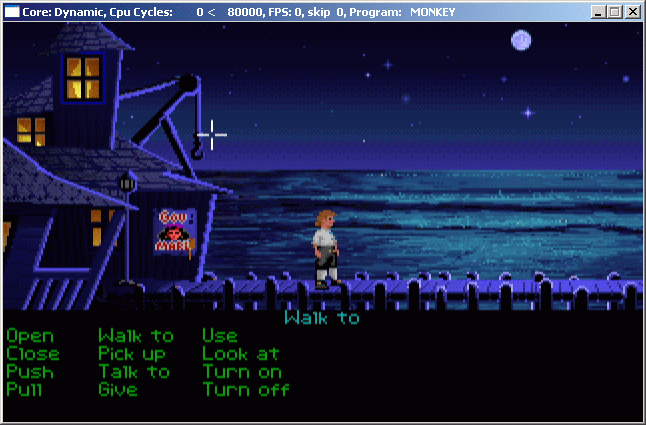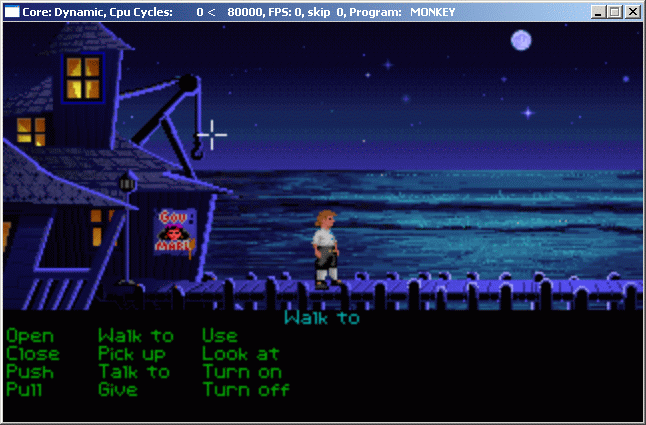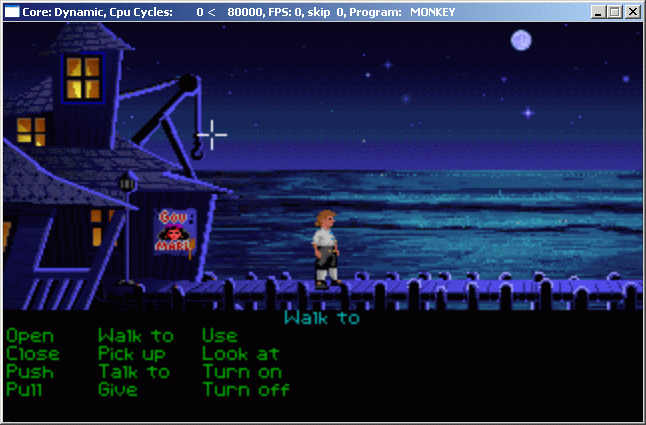ddraw isn't the only mode that's "blurry".
From my latest test comparing IQ between different output modes:
1. OpenGLHQ (best) (# of unique colors 7,078)
2. Direct3d (# of unique colors 505)
2. OpenGLNB (# of unique colors 504)
2. Surface (# of unique colors 505)
3. Overlay (# of unique colors 10,327)
4. ddraw (# of unique colors 13,869)
4. opengl (worst) (# of unique colors 13,934)
The ones with the same # are AFAIK the same image quality.
So for straight CVS it's good that "Surface" is used since that's the "best" as far as original DOS image quality graphics.
Of course if you like blurriness then the output modes that are worse than surface will work and not be as resource intensive as using a scaler.
All screen caps taken using "ALT+Printscreen", saving as .BMP with Irfanview.
Tested using "Normal2x" (Haven't gone through the scalers yet...just default config)
Used Monkey Island 1, only took pic when character had stopped walking in the initial part of the game.
Taken with Windows XP, Directx 9c, Windows XP Pro, ATI X800 with Catalyst 5.8 drivers.
gulikoza's build, Dec 2 2005
